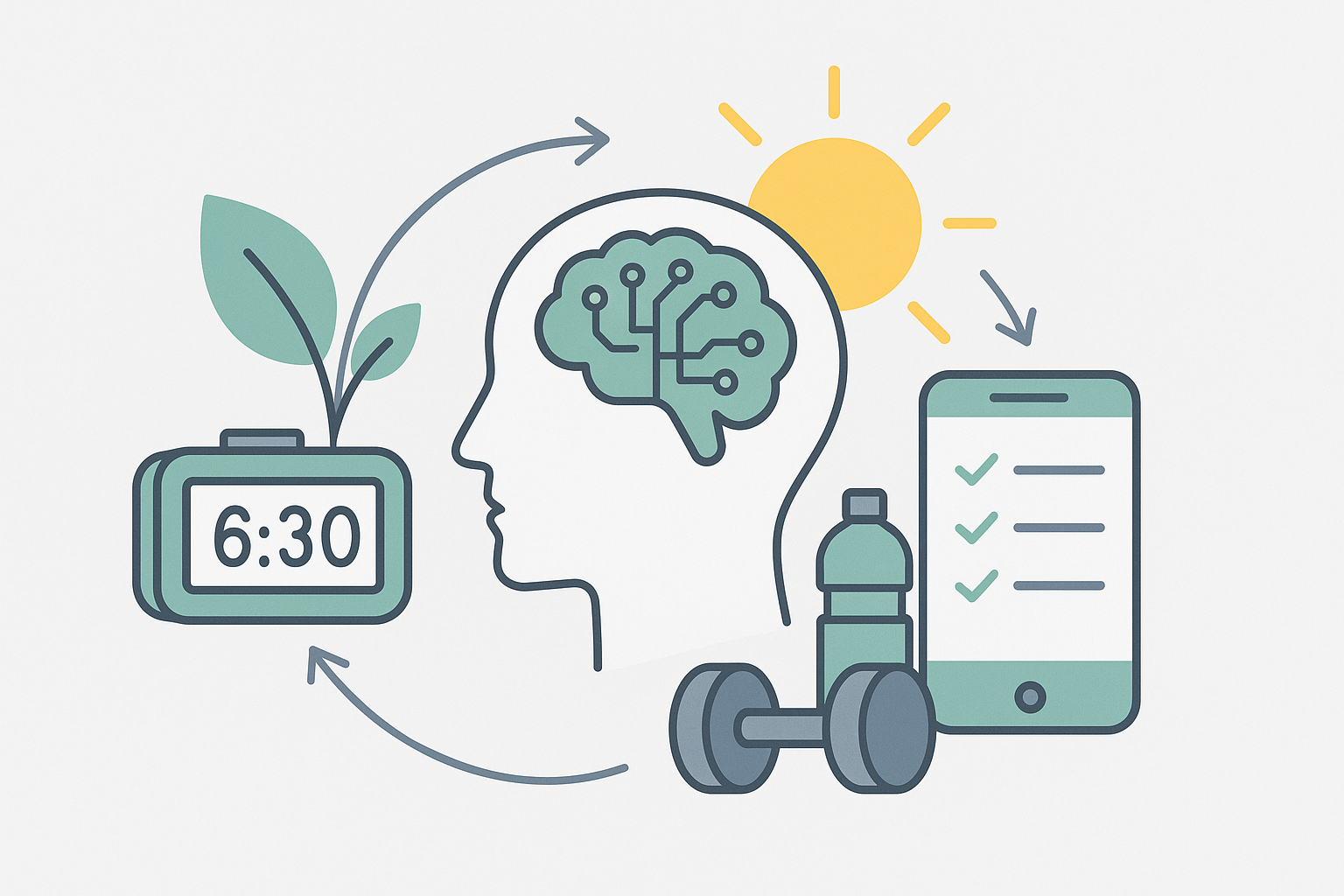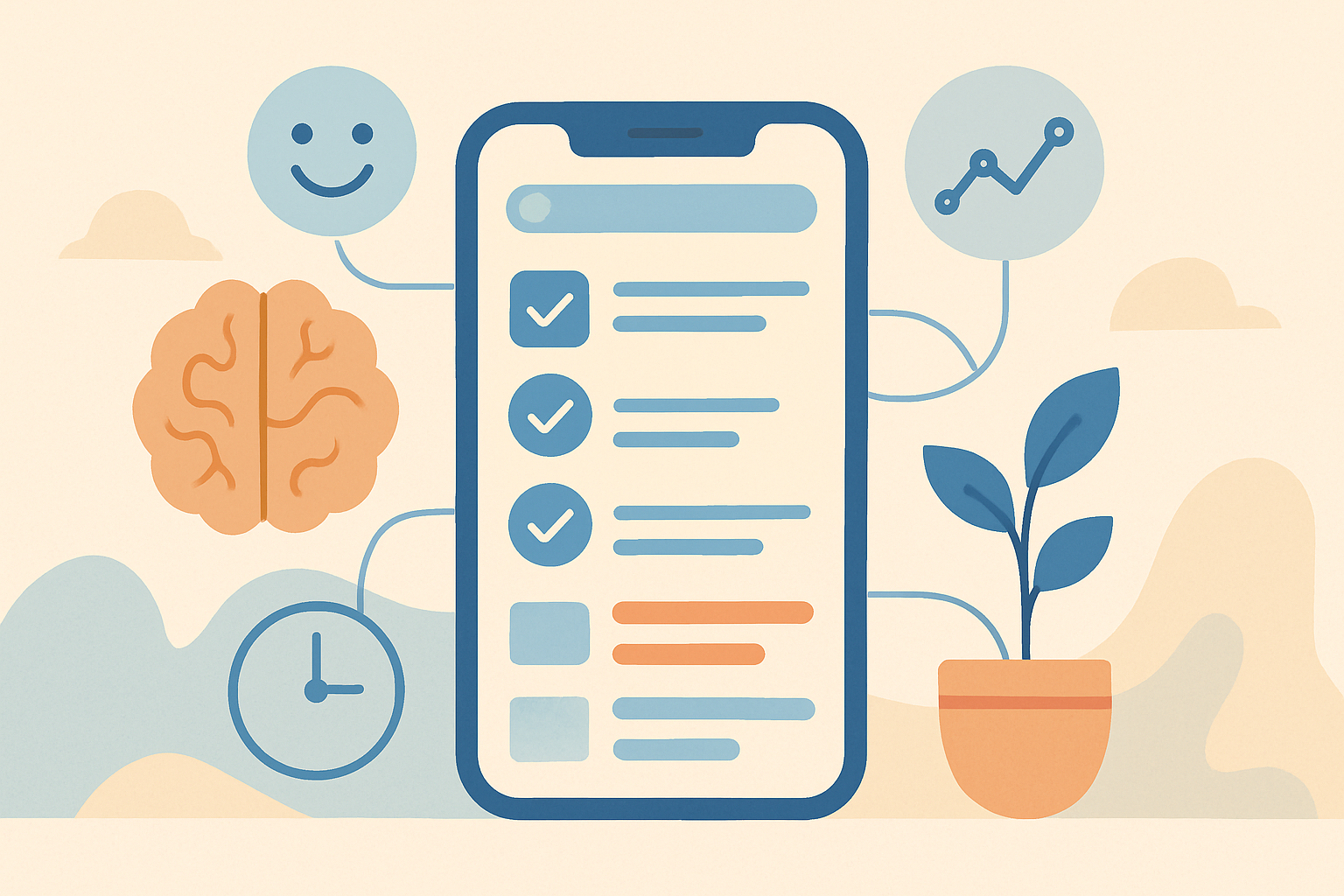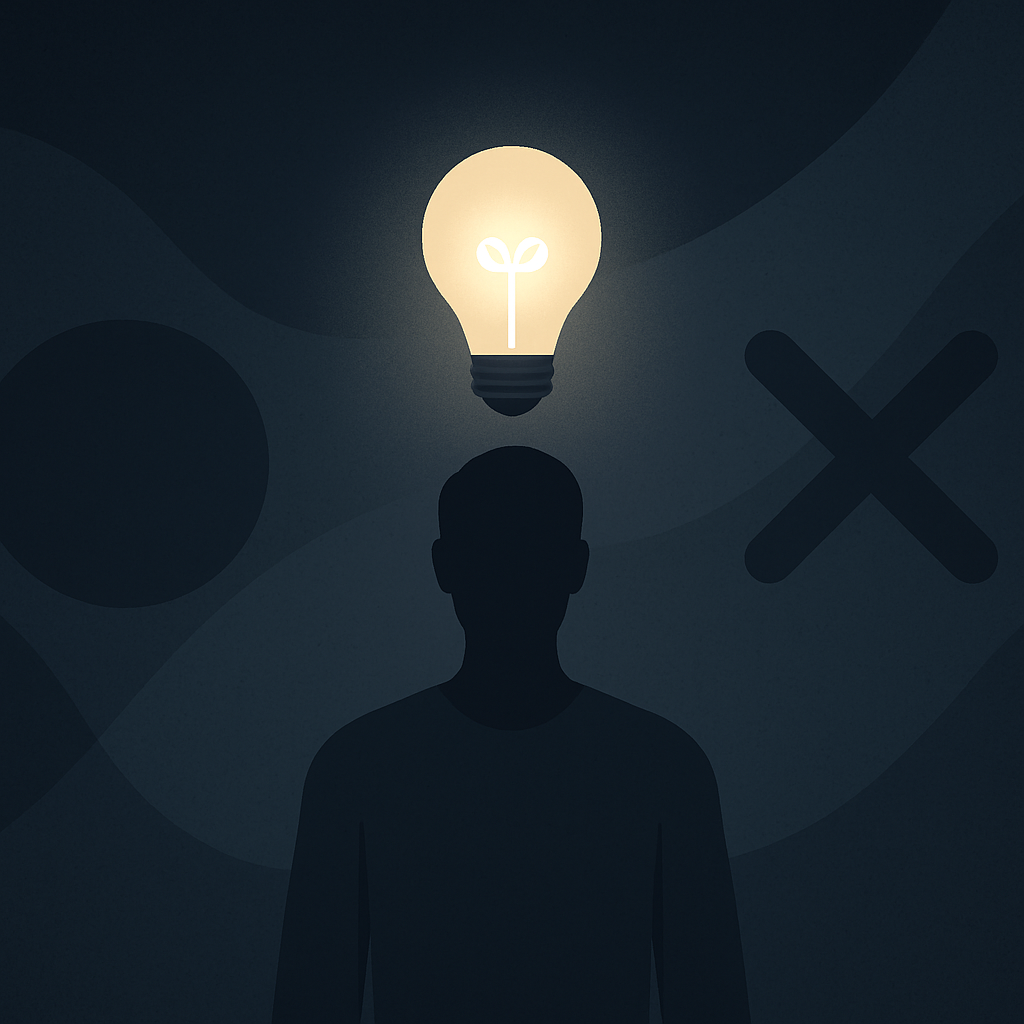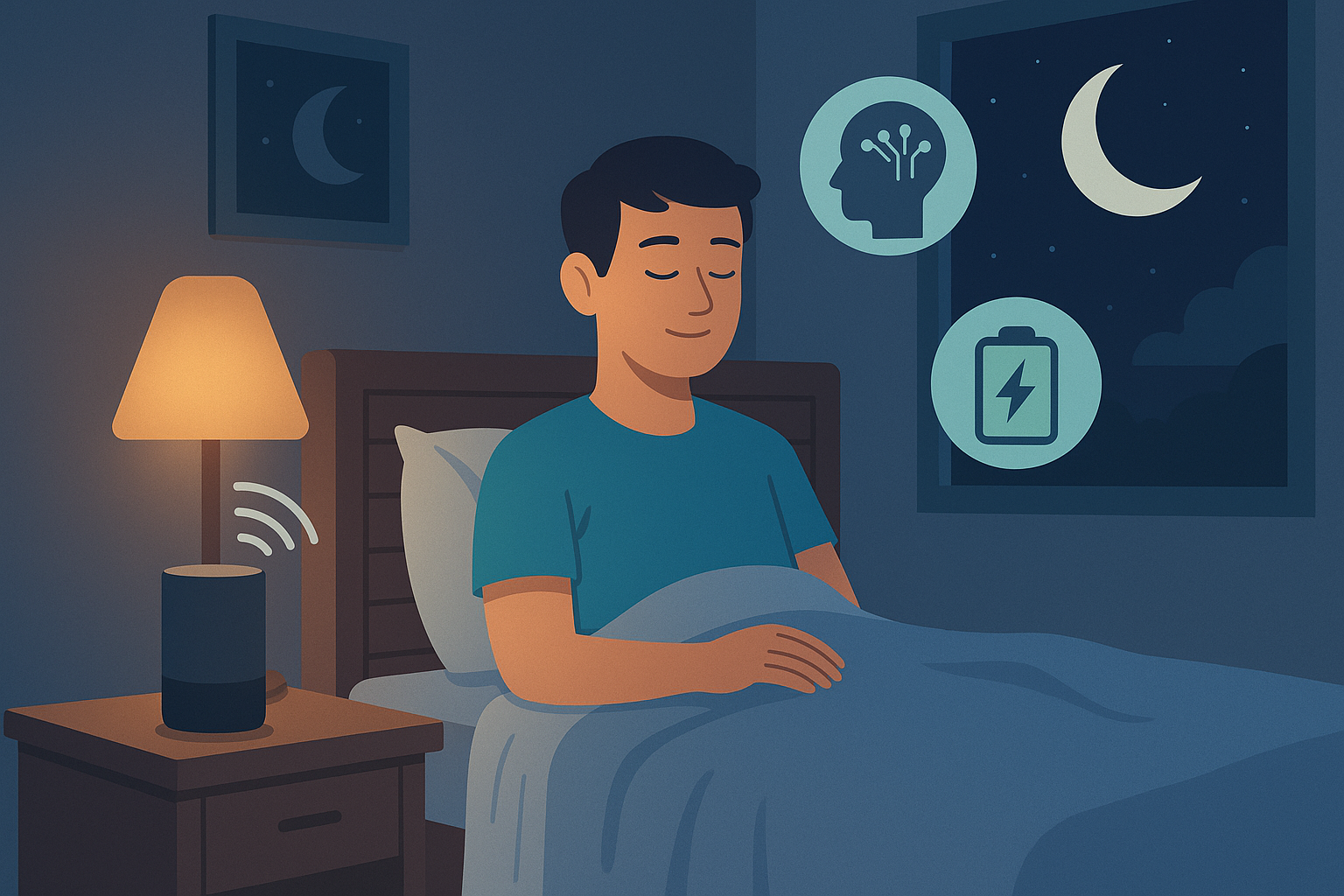Morning Routine. Most people know this. Yet few manage to keep a consistent routine. Why? Because mornings depend on variables — sleep quality, stress, weather, willpower — that are hard to predict and even harder to control.
That’s where artificial intelligence enters the picture.
The AI morning routine isn’t about adding gadgets or apps. It’s about using data, automation, and self-awareness to turn mornings into a reliable system — one that adapts to you, rather than forcing you to adapt to it. In 2025, this is no longer science fiction; it’s the daily reality of high-performing entrepreneurs, freelancers, and creators who use technology to stay balanced, sharp, and consistent.

The Logic Behind an AI Morning Routine
Every person has an internal rhythm, known as the circadian cycle, which regulates sleep, mood, and alertness. Traditional routines ignore that cycle; AI-based systems analyze it. By combining data from smartwatches, sleep trackers, and cognitive apps, AI learns when your body and mind are naturally most active, and it builds your morning around that insight.
Instead of using the same fixed plan every day, your AI morning evolves. On days with poor rest, it suggests slower starts and more hydration. On high-energy days, it boosts early productivity and focus. The result is a consistent sense of clarity and energy — not because you work harder, but because you work with yourself, not against yourself.
Step One: Smarter Wake-Up Sequences
AI has redefined what it means to wake up well. Rather than a loud alarm, modern systems like Eight Sleep or SleepSpace combine environmental sensors, smart lights, and temperature regulation to create a soft, data-driven transition from sleep to wakefulness.
Your mattress gently warms up before your natural wake window. The blinds open automatically. A tailored soundtrack fades in, generated by an AI that knows your sleep quality and emotional baseline. By the time you open your eyes, your nervous system is already aligned with the day’s rhythm.
This kind of adaptive awakening doesn’t just feel better — it improves heart rate variability (HRV), stabilizes cortisol levels, and reduces early fatigue. It’s the first small win of the day, and it sets the tone for all the others.
Morning Routine Step Two: Mindful Calibration and Cognitive Warm-Up
The brain needs a few minutes to switch from dream processing to analytical function. Instead of grabbing your phone or checking messages, an AI meditation assistant like Calm AI or MindfulGPT helps you ground your mind before external input.
These systems generate personalized morning sessions using your biometric and journaling data, addressing what your mind was processing during sleep. One day it may focus on calming stress; the next, on setting creative intentions or emotional alignment.
Here’s a look at how this digital mindfulness layer works:
| Tool | Function | Benefit |
|---|---|---|
| MindfulGPT | Creates an adaptive 3-minute meditation based on sleep and mood data | Clears residual mental clutter |
| FocusPrompt AI | Generates a single motivational sentence tied to your day’s goals | Directs your early focus |
| NeuralNote | Summarizes overnight thoughts or dream patterns | Translates subconscious noise into insight |
This cognitive warm-up isn’t spiritual hype — it’s neuroscience. The goal is to help your brain switch smoothly from subconscious mode to active attention.
Step Three Morning Routine: Energy Priming with AI Nutrition and Movement
Your body chemistry defines your mental energy. The foods and movements you start the day with determine whether you’ll feel stable or scattered.
AI-powered nutrition platforms like Zoe, InsideTracker, or Lumen analyze your metabolism, blood glucose response, and microbiome data to recommend what breakfast will keep you energized for longer. Meanwhile, adaptive fitness systems such as WHOOP Coach or Fitbod AI interpret your recovery data to recommend ideal physical activity.
For instance, your WHOOP band detects a deep recovery night. The system schedules a 20-minute high-intensity session to capitalize on your energy spike. On another day, poor sleep data prompts it to replace exercise with guided breathwork and a hydration plan.
Each decision ensures movement aligns with energy, not ego — giving you consistent focus instead of early burnout.
Step Four: Controlling Digital Input and Preserving Focus
The first hour after waking determines how your brain allocates attention for the rest of the day. Checking emails or social feeds immediately triggers reactive behavior, training the brain to chase notifications instead of priorities.
AI tools like Reclaim.ai, FlowState Assistant, and Notion AI Daily now automate digital silence. Your phone stays muted, and only critical notifications pass through filters trained on your behavior. When you’re ready, your AI system delivers a summarized digest — key emails, schedule adjustments, and task highlights — so you stay informed without getting overwhelmed.
This simple barrier between you and distraction prevents dopamine spikes that fragment concentration. It’s not about digital detox — it’s about digital design for deep focus.
Step Five: From Calm to Creation — AI Task Planning
Once your mental and physical systems are balanced, it’s time to translate energy into purposeful action.
AI scheduling assistants like Motion, Reclaim.ai, or Sunsama use predictive algorithms to build adaptive calendars that fit your current energy levels. They automatically reorder tasks based on time sensitivity, estimated focus intensity, and your biological rhythm.
For example, if your wearable device detects you’re in a peak cognitive state between 9:00 and 11:00 a.m., your AI planner will schedule deep work blocks there, pushing meetings or routine tasks later. If you’re running low on focus after lunch, it inserts recovery intervals or short breaks to maintain efficiency.
This continuous feedback loop between your biology and calendar ensures you’re always working in sync with your body’s natural tempo — not against it.
A Real Example: The Data-Driven Flow Morning
Here’s how a digital professional might use an AI-powered morning routine in practice:
| Time | Action | AI System | Objective |
|---|---|---|---|
| 6:30 | Gradual wake-up with light and temperature control | Eight Sleep + Alexa Routine | Align wake-up with circadian rhythm |
| 6:45 | 3-minute AI-guided meditation and focus prompt | MindfulGPT + FocusPrompt | Calm and direct mental energy |
| 7:00 | Personalized breakfast suggestion | Lumen + Zoe | Stabilize glucose and alertness |
| 7:20 | Movement session or breathwork | WHOOP Coach | Activate physical energy |
| 7:45 | Quiet digital mode (no alerts) | FlowState Assistant | Preserve attention and flow |
| 8:00 | Adaptive task planner activates | Motion + Notion AI | Optimize priorities for energy curve |
The entire process takes less than 90 minutes, yet it transforms the rest of the day. By automating energy, focus, and intention, you start each morning already in alignment with your goals — not chasing them.
Why AI Helps You Feel More Human, Not Less
Some fear that adding AI to something as personal as a morning routine removes authenticity. The opposite is true. When machines take care of repetition, humans regain the freedom to be intentional.
Instead of rushing through choices, you regain mental stillness — the rarest resource in the digital era. AI doesn’t replace awareness; it amplifies it.
An AI assistant can’t meditate for you or feel gratitude for the sunrise, but it can make sure your environment supports those moments instead of interrupting them. That’s the real essence of a productive life: technology as an enabler, not a distraction.
Building Your Personalized AI Morning Routine
You don’t need a dozen apps to start. The simplest system begins with one tool per layer of the morning.
- For sleep and wake: SleepSpace or Eight Sleep
- For mental focus: MindfulGPT or Calm AI
- For energy and movement: WHOOP Coach, Fitbod, or Lumen
- For planning: Motion, Notion AI, or Reclaim.ai
Use them for two weeks, let the AI learn your habits, and adjust your inputs gradually. Within a month, you’ll feel the difference — a smoother start, a quieter mind, and energy that lasts longer into the day.
Once established, your AI morning becomes invisible. It’s not something you think about — it’s simply the rhythm that carries you forward with clarity and confidence.
Conclusion: A Morning That Works With You
An AI morning routine isn’t about optimization for the sake of performance. It’s about harmony — aligning biology, technology, and intention to create mornings that nourish, not drain.
When your wake-up, nutrition, mindset, and planning are orchestrated seamlessly, your day begins with momentum, not resistance. And in the long run, that rhythm compounds into focus, flow, and fulfillment.
If the modern world is designed to distract, the AI morning routine is your quiet rebellion — a blueprint for presence and purpose in the age of automation.
By MBFProductivity
Related & Recommended
External link 2: Discover how Lumen measures metabolism in real time for smarter morning nutrition → www.lumen.me
Internal link: Read next → The 5-Minute Morning Automation Routine
External link 1: Explore how SleepSpace personalizes wake-up timing with science-backed sleep data → www.sleepspace.com
Blog
This section provides an overview of the blog, showcasing a variety of articles, insights, and resources to inform and inspire readers.
-

AI Habit Tracking and the New Rhythm of Modern Self-Improvement
AI Habit Tracking. Progress used to depend on discipline. Now, it depends on data.…
-

AI Decision Making and the New Discipline of Intentional Living
AI Decision Making. Every “yes” has a cost. Every time you agree to something…
-

The Perfect AI Night Routine to Sleep Better and Think Smarter
AI Night Routine. Your morning doesn’t begin when you wake up — it begins…
